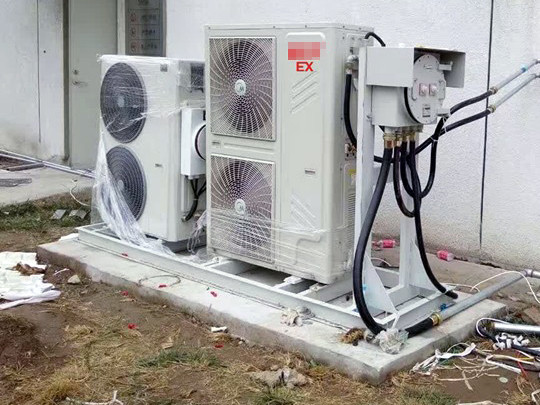As the era progresses, air conditioners have transitioned from conventional to explosion-proof models, and the frequency of these advanced units has likewise evolved. But how do inverter air conditioners stand out compared to their traditional explosion-proof counterparts? Below, we delve into several enhanced protection modes of inverter explosion-proof air conditioners, which ensure safer and more efficient operation during everyday use.

1. Overheat Protection for Indoor Heat Exchangers:
When operating in heating mode, slow fan speeds or clogged filters can hinder heat dissipation from the indoor coil, causing the heat exchanger’s surface temperature to rise. This scenario not only decreases heating efficiency but may also lead to equipment overheating. Hence, inverter explosion-proof air conditioners incorporate comprehensive overheat protection for indoor heat exchangers. The system restricts compressor frequency increase when room temperature exceeds 53°C; it reduces compressor frequency and operates the outdoor fan motor at low speed when it surpasses 56°C; and it halts the compressor and activates overheat or overload protection when temperatures exceed 65°C. These critical temperature thresholds are monitored and alerted through display panels, indicator lights, and buzzers.
1. Compressor Overcurrent Protection:
To safeguard against excessive operating currents that could damage the compressor’s motor windings, inverter explosion-proof air conditioners are equipped with robust overcurrent protection. During the cooling phase, if the compressor’s current hits 9.6A, the system’s microprocessor triggers a control signal to prevent frequency increase; at 11.5A, it signals to reduce frequency; and at 13.6A, it activates a protective signal to cease the compressor’s operation. Similar protocols apply during the heating phase, with specific current thresholds set at 13.5A, 15.4A, and 18A, respectively. Each of these critical stages is prominently signaled to the user through display panels, indicator lights, and buzzers for heightened awareness and safety.
 Shenhai Explosion-Proof
Shenhai Explosion-Proof
